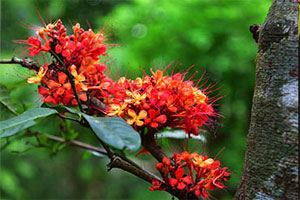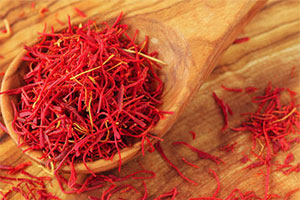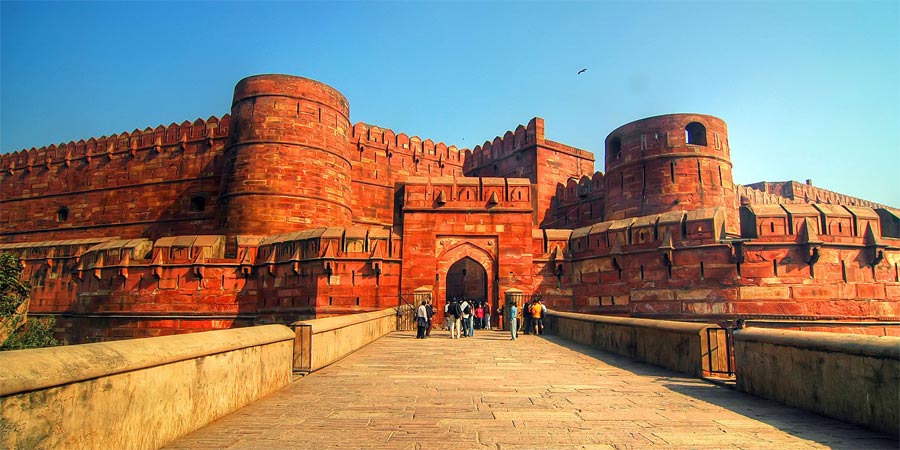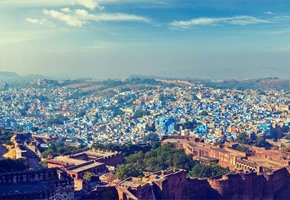India is a diverse country, its landscapes are as varied as its people. Regardless of the differences, India is united by colour. In this series dedicated to the launch of our beautiful India in Colour infographic, we will look at each colour associated with India and explore its religious and cultural significance. This week, we're looking at the vibrancy of the colour red.
Red in India holds a number of different, sometimes seemingly contrasting meanings and touring India by train you will be immersed in the rich, deep reds that hold so much significance for the country. The colour represents purity, spirituality, protection and commitment. Red is used widely in Indian traditions, from the tilak painted on the forehead for wisdom, to the red string tied around the wrist for protection.
In Sanskrit the word for 'red' is the same as the word for 'blood', Rakta, blood is necessary for life and therefore considered divine. Red in India is the equivalent of black in the west - it's the colour people wear when they want to dress up. 'Lal' is a common middle name in India, and it means red.

In Bengal, the colour red is used to worship the goddess Kali (also called Durga), one of the most well-known Hindu goddesses. Kali is a manifestation of the Divine Mother, and is also known as the goddess of destruction. The colour red embodies her spirit, and the red hibiscus flower is used in her worship.
Red is used during the traditional practice of 'sindoor khela'. This occurs at the end of the Durga puja festivities, and married women paint each other red while they pray for long and happy marriages. Sindoor is a red paste worn only by married Hindu women along the parting of their hair, or as a red dot on her forehead. This is first applied by her husband on their wedding day, and she then applies it every day for the rest of her marriage. This tradition is still common in southern India, but in northern India the practice is no longer limited to married women. The tapering red mark, the talik, is placed on the forehead of men to wish them good luck for the day.
Red is also important for Hindu brides, Alta is a red dye which is applied to the edges of the bride's feet during her wedding ceremony, and at certain religious festivals. Alta is also used when the bride crosses the threshold of her new home for the first time; she stands in a plate of the dye, before taking her first step into her new home with her right foot. A trail of red footprints is left behind her on a white sari bordered by red.

There are many Indian traditions involving the colour red. A custom is to tie a red string around the wrist of a loved one during prayers. This is believed to protect them and safeguard them from the evil eye. The string is worn until it falls off. As well as protection, red represents bravery and strength. During prayer, deities are often showered with red powder, meaning red has become an important part of Indian culture.
As well as symbolising purity, red is also believed to represent fertility and prosperity. This stems from the red soil found in a large part of India's fertile farmland. The red clay soil is used widely in prayer ceremonies and used as offerings.
Our stunning India in Colour infographic takes you through the symbolism of the most important Indian colours, and gives you a taste of the beauty of India.
Travel with Great Rail Journeys on luxury train tour packages in India, and experience the vibrancy of this land and its people for yourself.





